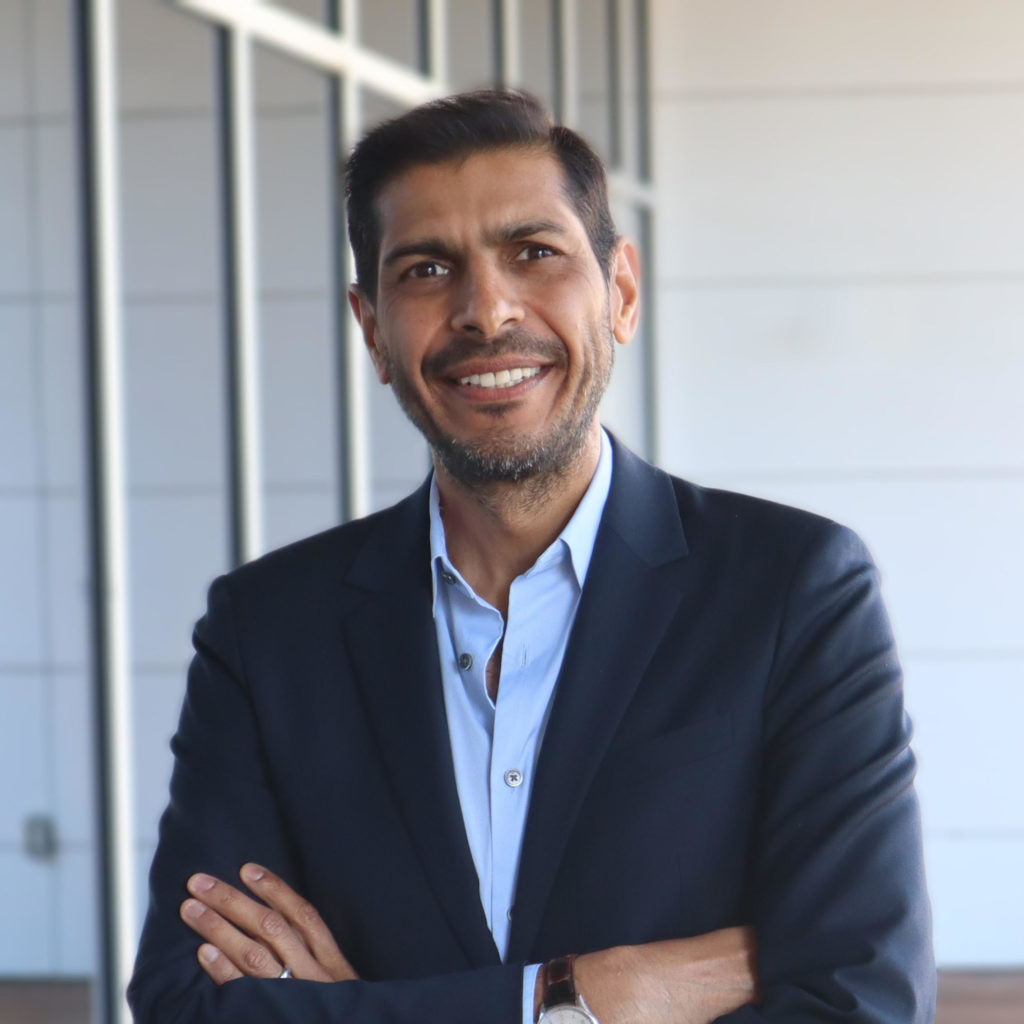ATLANTA, GA. (December 7, 2020) – David Harvey, CEO, interviews Rajesh Aggarwal, MD, Panda’s new Chief Growth and Strategy Officer

David Harvey, CEO; Panda Health: Raj, thanks for doing this Q&A with me so we can introduce you to everyone we work with. Let me start by saying we are so thrilled to welcome you to Panda’s senior leadership team as our Chief Growth and Strategy Officer. Your experience, with 25 years in health care as a surgeon, as a professor, as a scientist with a PhD in Virtual Reality, and as leader of strategic ventures and innovation, brings us such a rich and rare combination of skills and expertise. Could we start off by having you tell us a little bit about what brings you to Panda?
Rajesh Aggarwal, MD; Chief Growth and Strategy Officer: Thank you, David. I’m really delighted to be here and to join you and the team. The reason I joined Panda is actually the same reason that I felt so privileged to be a surgeon, which was to have a job that enables me to have a meaningful impact on individuals and their families. I’ve worked throughout my career to expand the impact I can have to larger and larger populations. That started with bringing new technologies to my department, then across a large Academic Medical Center, and now to thousands of providers across hundreds of health systems with Panda.
DH: I’m really glad to hear that and we are very much on the same page! Tell us more about the journey that brought you here.
RA: Sure. Let’s start when I was a surgical trainee at Imperial College, London. My mentor there, Lord Ara Darzi, was Chair of Surgery and one of the pioneers of robotic surgery. When he learned that I wanted to be at the nexus of medicine and technology he steered me toward research associated with the first daVinci surgical robot. What was even more interesting beyond the technology, was how to integrate it into the surgical workflow; I focused my energy upon the training needs of the surgical team, to ensure highest levels of quality and safety for the patients. This led to my PhD thesis, focused upon virtual reality simulation to train the surgeons, with objective assessment of their performance through motion, video and eye-tracking analysis, a simulated operating suite to train the surgical team, and online virtual environments to prepare and engage the patients too!What I learned is that a highly engineered technology is just the start point to impact clinical care – it is critical on the front-end to integrate the new tool into clinical workflows, and on the back-end to measure outcomes of interest in a scientifically robust manner.
About 7-8 years later, I took a moment to take stock of progress in the field and realized that despite the promise of the technology, nothing around me had really changed. We were still doing many things in the operating room the same old way. This was deeply disheartening and it was a wake-up call. I started to see all the different things that would have to happen for real change to happen. And I wanted to learn how to make all of those things happen. I understood the technology – the next thing I needed to learn was how to implement. I got into reading about health economics, operations and process engineering and change management. And at one point I realized that if I was going to be able to work at the scale and speed I wanted, I would do well to come to the United States.
I joined the faculty at University of Pennsylvania as a GI surgeon, then moved to McGill University, designing courses that trained over 18,000 learners. It was in disseminating those new techniques and approaches to practitioners through those courses that I really started to feel like I was working at some degree of scale. And I realized that if I wanted to increase that reach by an order of magnitude or more, I would be best positioned to do that in partnership with industry.
DH: Is that what brought you to your most recent role at Thomas Jefferson University.
RA: That’s right. TJU welcomed me into their fantastic environment and offered me a role as a surgeon and as leader of their Strategic Ventures division.
TJU, thanks to the leadership and commitment of CEO Dr. Stephen Klasko, is one of the most advanced institutions and cultures for innovation, and they have earned their reputation as a great place for startups to build true partnerships. While I was EVP of that division, we reviewed almost 500 digital health companies, and closed over 15 strategic partnership deals. I was at the tipping point to not only see, but drive too, firsthand what it takes to bring real change to patient care, at Jefferson and beyond.
Through sourcing and negotiating these strategic partnership deals, with co-development, clinical validation and commercial scale, we delivered on three key goals: first, to drive better patient care that is achieved at lower costs; second, to create a reputation for Jefferson being a place where early-stage companies can effectively and efficiently partner with a major health system; and third, to create impressive equity value and diversified revenue streams for the health system.
DH: It’s such a great story and we are all so excited that you’re coming to work with us here at Panda. With your unique set of experiences and achievements we feel so fortunate that you chose to join our team. Could you tell us what convinced you to become a leader here at Panda?
RA: Thanks David. There are a number of reasons – and it’s a combination of the people, the marketplace model, the vision for how Panda creates value both for providers as well as innovative digital health companies. And one of the most exciting aspects is the ability to work at an entirely different scale. At TJU we were working across a very large health system – which is incredible.
Next for me is to replicate that impact for many tens, if not hundreds, of health systems across the US, while working with the companies that are creating these innovations. We all know that there are many great digital health companies out there offering highly engineered and effective solutions; and health systems understand the urgency to drive forward their digital health strategies too.
At Panda, I want to leverage my 25 years in health care working with innovative health companies and high profile health systems to deliver on the promise of health care that is of high quality, easy to access, at a reasonable cost and with a great experience, to create a portfolio of solutions that really work for providers, patients and society in general.
